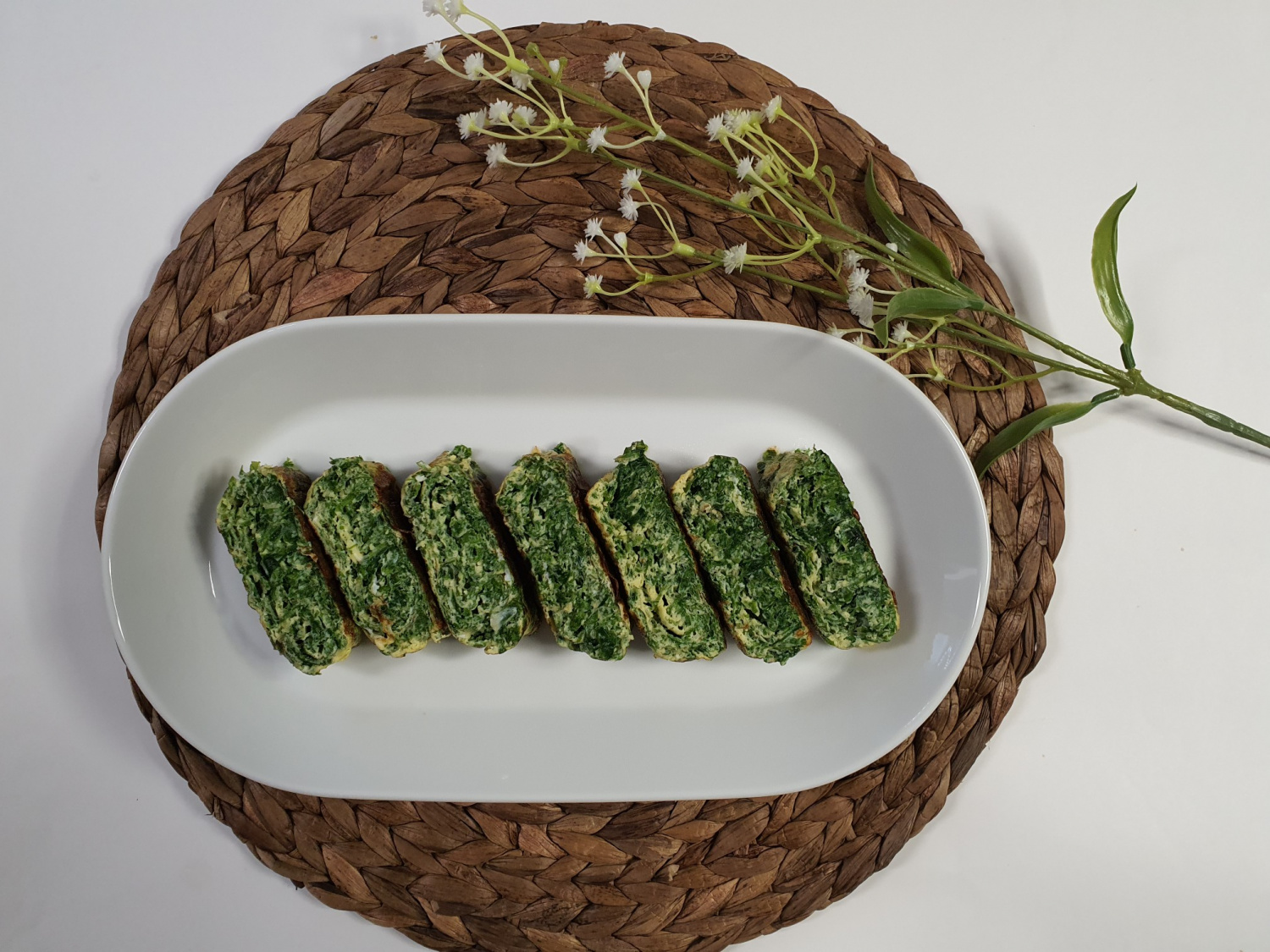Seaweed and Egg Roll: A Savory Delight
Don’t Miss Out on This Seasonal Seaweed Egg Roll!

Made for family members sensitive to the fishy taste of seaweed, this rolled omelet uses fresh seaweed mixed with eggs, resulting in a wonderfully savory and delicious dish that was quickly devoured. It’s a perfect way to enjoy the ocean’s flavors in a familiar and comforting way.
Ingredients- 1 piece of dried seaweed (gim or nori, approx. 20g)
- 5 large eggs
Seasoning & Others- Pinch of salt
- 1 Tbsp mirin (rice wine)
- Cooking oil for frying
- Pinch of salt
- 1 Tbsp mirin (rice wine)
- Cooking oil for frying
Cooking Instructions
Step 1
Begin by soaking the dried seaweed in clean water to rehydrate it and remove any impurities. Gently hold the seaweed strands and wash them vigorously under running water. This scrubbing action is key to eliminating any potential fishy odor. Continue washing until the slippery texture disappears and the seaweed feels clean and slightly firm.

Step 2
After rinsing thoroughly several times, carefully lift the seaweed out of the water using a fork. Using a fork is a helpful tip to drain the seaweed effectively without breaking it apart, keeping the strands separated.

Step 3
Squeeze out as much excess water as possible from the seaweed. Place the squeezed seaweed into a bowl. Using kitchen scissors, finely chop the seaweed into small pieces. Chopping it finely will help it distribute evenly within the egg mixture and create a beautiful texture in the rolled omelet.

Step 4
Crack the 5 large eggs into a separate bowl. Add a pinch of fine salt to season the egg mixture. Adjust the salt to your personal taste, but be mindful not to oversalt.

Step 5
To further enhance the flavor and eliminate any residual sea taste, add 1 tablespoon of mirin (Korean rice wine) to the egg mixture. Mirin helps to neutralize any unwanted odors and contributes to a more tender and pleasant texture.

Step 6
Add the finely chopped seaweed to the seasoned egg mixture. Using chopsticks or a whisk, gently stir in a circular motion until the seaweed is evenly distributed throughout the eggs. Ensure the seaweed pieces are well incorporated for a consistent flavor and appearance.

Step 7
Heat a non-stick frying pan over medium-low heat and add a moderate amount of cooking oil. Be aware that seaweed egg rolls can brown more quickly than plain egg rolls due to the seaweed’s composition. Cooking over gentle heat is essential to prevent burning.

Step 8
Once the pan is heated, pour in about one-third of the seaweed-egg mixture. It’s best to cook the egg roll in stages rather than all at once. This allows for easier rolling and ensures the inside cooks thoroughly while the outside remains beautifully golden.

Step 9
When the edges of the poured egg mixture begin to set, gently start rolling the cooked portion towards one side of the pan. Once rolled, pour another portion of the egg mixture into the empty space. Continue this process of rolling and adding more egg mixture, repeating 2-3 times until all the egg mixture is used and you have a thick, well-formed roll.

Step 10
After the final layer of egg is cooked, turn off the heat. Use the residual heat from the pan to shape the egg roll. Eggs are protein-based and shape easily when warm. Gently roll the omelet in the pan to firm up its shape and ensure it holds together nicely. Let it cool slightly before slicing to enjoy your beautiful seaweed egg roll.

Step 11
For more detailed recipes and culinary inspiration, please visit the ‘Dajeongdabab Blog’ on Naver. Happy cooking!



